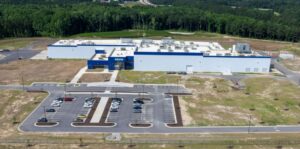Israel-based biomedical engineer Amit Gefen is developing a laboratory-grown chicken breast. Based at Tel Aviv University’s Iby and Aladar Fleischman School of Engineering, the biomedical engineering doctor’s research could lead to a sustainably produced chicken that even vegetarians may consider adding to their diets.
Dr. Gefen’s resume includes substantial experience working with cells and understanding how they operate. One of his projects, for example, studied the changes that cells undergo when an individual is lying down or sitting for extended intervals. The Modern Agriculture Fund recognized Gefen for his work in isolating animal cells, alleviating the need to test on animals.
While some of the inspiration for Gefen’s quest for chicken breast was drawn from recent successes at growing beef in the lab, chicken breast poses some more difficult obstacles. To create lab-grown beef, muscle fibers from a cow are transformed into a piece of meat. Constructing an entire chicken breast, however, poses challenges when it comes to developing the structure and architecture of the lab-grown tissues. In order to create the traditional shape of a chicken breast, Gefen will need to create some sort of scaffold to culture the cells together in a three dimensional structure.
Additionally, one of Gefen’s goals is to develop an end product that is completely non-reliant on animal tissues or byproducts. Lab-grown beef, for example, required using fetal bovine serum, which is extracted from cow uteruses.
Considering that chicken accounts for roughly one third of the world’s overall meat consumption, Gefen’s research could make a major impact when it comes to finding sustainable solutions to feeding our growing population.
Q: What inspired you to pursue lab-grown animal protein? What were the biggest motivators behind your research?
A: A sustainable food production model should consider the cost of growing livestock for a continuously increasing world population – clearly at some point the land, water and food resources for the animals themselves will become so expensive that the end product – native meat, will be too expensive for most of the population to consume regularly. It is our duty as university researchers to prepare for such a future, and offer the society some alternatives based on technology that could in the future make the food production model more sustainable.
Q: How do you see this product fitting in with the current food production system during the next decade? In 25 years?
A: I expect that these technologies will solidify into actual food products, and when they do, and after appropriate regulatory approvals, there will be a need to ‘educate’ the public with regard to these new technologies and the prospects that they open up, not only in terms of offering an alternative to traditionally grown meat but also in the way that they allow to precisely control calorie value (e.g. proteins versus fat) or low dosage of antibiotics etc.
Q: Now that scientists have been able to successfully create cultured meat, what do you see as the next phase of innovation and technological development for cultured meat?
A: In the long-term of the project, we would like to look into barriers for economical production of the chicken breast, for example developing bioreactors that will allow cost-effective production of large enough specimens for the food industry. Additionally, we will focus – from the beginning – on safety issues and minimizing the involvement of components from living sources (besides the cells), for example using serum free media where possible to culture the cells, or minimizing dependency of collagen as scaffold for the tissue-engineered chicken breast.
Q: How would you respond to members of the public who are skeptical about consuming lab-cultured meat and poultry products? What facts are missing from current media coverage of this technology?
A: I agree that some major challenges still exist, particularly producing growth factors produced from non-cancerous tissues or use of synthetic growth factors as well as economic barriers as said above. There is substantial research that needs to be completed to resolve these problems, but we take the initiative, step by step.
Have news or tips? Email [email protected].




